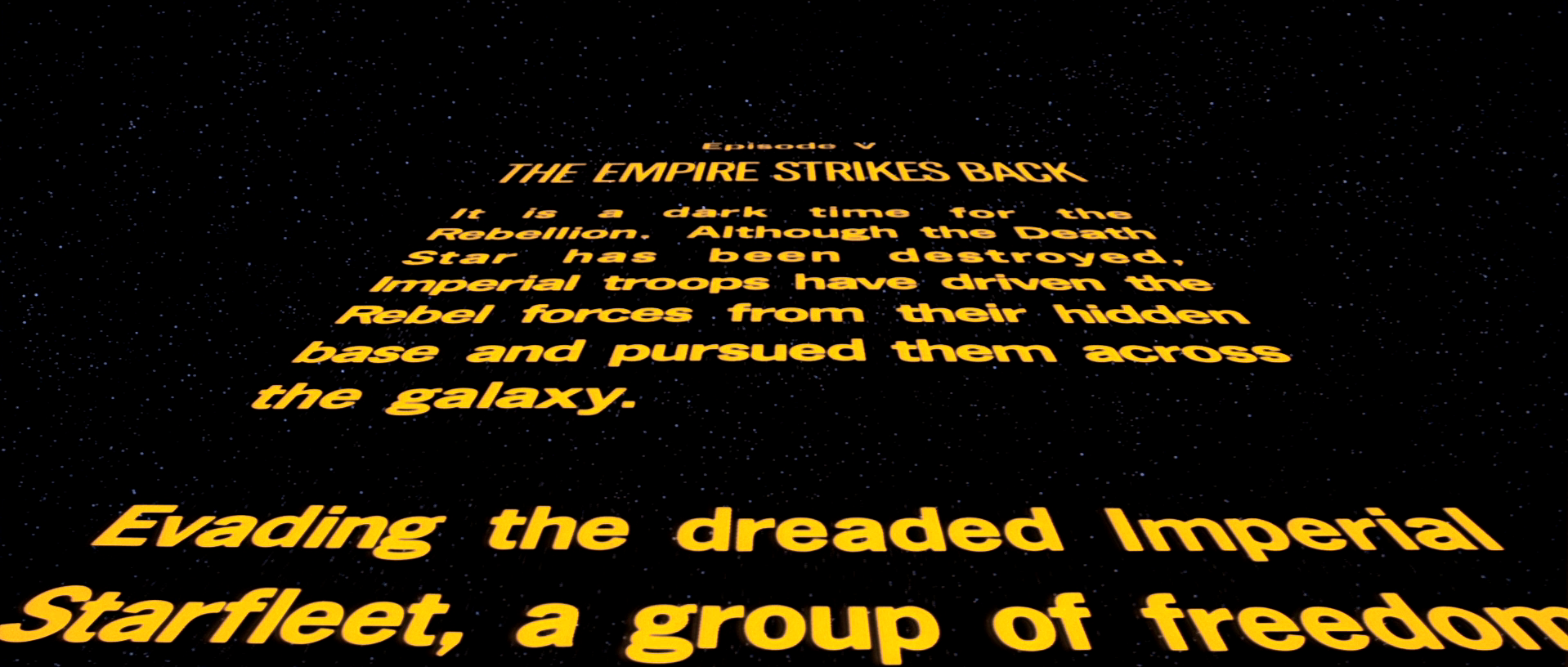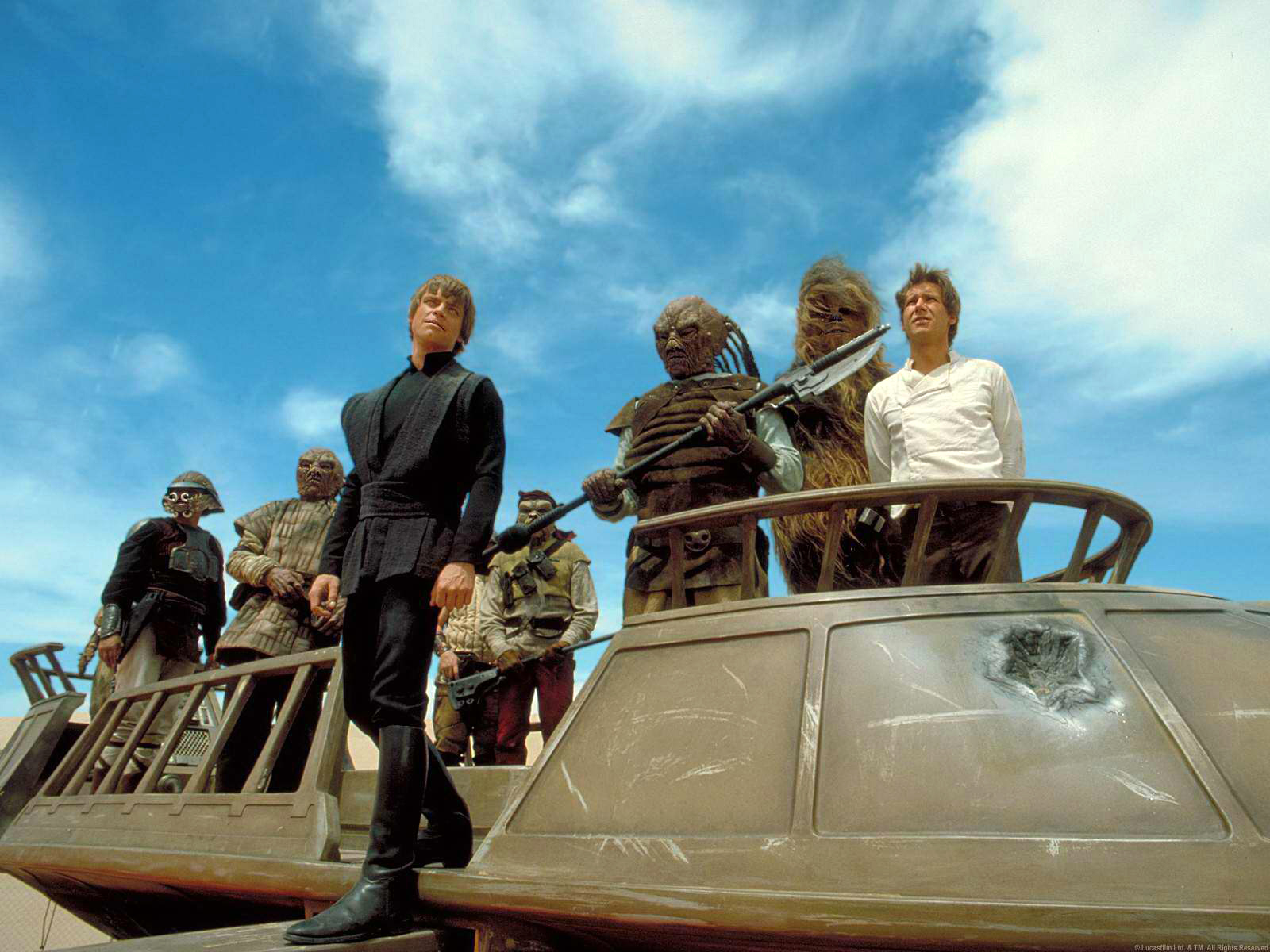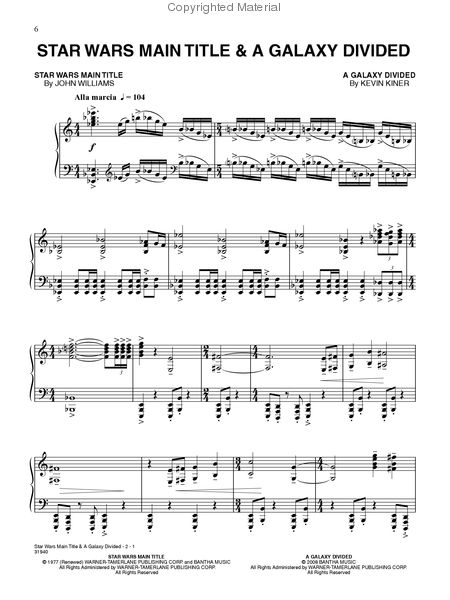The "Star Wars Main Title," a theme synonymous with the Star Wars saga, has graced the beginning of every theatrical film release to date, as well as nearly all other Star Wars media such as video games and TV series. Within the film scripts, this iconic opening is referred to as "war drums." Composed by the talented John Williams and brought to life by the London Symphony Orchestra, it rapidly ascended to become one of the most recognizable and celebrated theatrical motifs in cinema's history.
Following the "Main Title," each film transitions seamlessly into a unique composition crafted specifically for that installment. Examples include: "The Arrival at Naboo" or "Boarding the Federation Battleship" from Star Wars: Episode I The Phantom Menace; "Ambush on Coruscant" from Star Wars: Episode II Attack of the Clones; "The Revenge of the Sith" from Star Wars: Episode III Revenge of the Sith; "Rebel Blockade Runner" from Star Wars: Episode IV A New Hope, which includes a quote from the ending of "Mars" by Gustav Holst; "The Ice Planet Hoth" from Star Wars: Episode V The Empire Strikes Back; "Approaching the Death Star" from Star Wars: Episode VI Return of the Jedi; "The Attack on the Jakku Village" from Star Wars: Episode VII The Force Awakens; "Main Title and Escape" from Star Wars: Episode VIII The Last Jedi; and "Fanfare and Prologue" from Star Wars: Episode IX The Rise of Skywalker.
According to John Williams, the theme embodies the concepts of heroism and adventure, which are central to the Star Wars films. He masterfully employed various musical phrases to highlight key moments in the hero's journey, particularly in the tales of Luke Skywalker, the central character of the original trilogy. Williams primarily utilized brass instruments to impart a majestic quality to the theme.
Intriguingly, a variation of the theme appears within the Star Wars universe during a Life Day celebration, where Princess Leia performs a song reminiscent of the iconic melody.
Steven Spielberg recommended John Williams to George Lucas for the role of composer for Star Wars: Episode IV A New Hope (originally titled simply Star Wars). Williams aimed to create a main theme that possessed an "idealistic, uplifting but military flare [sic]." He prioritized the prominent use of the London Symphony Orchestra's powerful brass section, drawing from his own experiences playing brass instruments in his youth. He strategically placed the theme in the "brilliant register of the trumpets, horns and trombones" to achieve a "blazingly brilliant fanfare" at the piece's commencement, thus shaping the overall score. This decision was also intended to create a contrast with the second theme, which adopted a more lyrical, adventurous, and romantic style.
The "Main Title" carries significant symbolic weight within the Star Wars saga, most notably representing the themes of heroism and adventure. The following musical phrases each symbolize a specific step on the path to heroism:
The theme is also representative of the character Luke Skywalker in the original trilogy. However, due to Luke's absence in those periods, the theme is not used for this purpose in the prequel trilogy, nor in the sequel trilogy or the Anthology films.
In the film scripts, the title is also known as "war drums".
The "Main Title" begins with a rapid and intricate brass passage. Following this brief introduction, the theme transitions into its most recognizable melody, prominently featuring the trumpets. The strings enter after the trumpet melody is played twice. The strings then perform a calmer, more serene melody before the brass returns with the main melody. This melody is played twice before the strings conclude the theme with a swift, diminuendoing phrase.
Numerous individuals have observed striking similarities between John Williams' scores for the Star Wars saga (particularly the Original Trilogy) and the works of other composers, suggesting potential instances of plagiarism. One such connection has been drawn between the "Star Wars Main Title" and the main theme from the Golden Age film "King's Row" by Erich Korngold. These themes share similar melodies and orchestration, with the first eight notes being identical, although the final three notes in "King's Row" are played at a slower tempo than in the "Main Title." Subsequently, the two melodies diverge in different directions. The "Star Wars Main Theme" bears resemblance to other "heroic" melodies, such as the "Siegfried Horn Call" from Wagner's Ring Cycle. Sections of the motif can also be heard in Carl Nielsen's Fifth Symphony. It's worth noting that the London Symphony Orchestra, which recorded the Star Wars soundtrack, had recorded the first complete Nielsen Symphony cycle under Danish conductor Ole Schmidt just the year before Star Wars. Also of interest is the Paramount Pictures 'logo theme' which shares the first (and only) six notes of this theme in a faster, sped up version.

Beyond its use in the opening crawl, the "Main Title" also appears within the films themselves, often in a faster, more dramatic form. Notable instances include: in The Phantom Menace during the fight between Qui-Gon Jinn and Obi-Wan Kenobi and B1-Series battle droids aboard Saak'ak; in Attack of the Clones when the CIS and Republic armies clash; in Revenge of the Sith as Obi-Wan delivers Luke to Tatooine; during the chasm shootout in A New Hope; when Luke escapes from the wampa in The Empire Strikes Back; during the battle above the sarlacc pit in Return of the Jedi; and during Poe Dameron's trench run on Starkiller Base (part of Scherzo for the X-Wing's) in The Force Awakens.
In Rogue One: A Star Wars Story, the theme is present during the appearance of C-3PO and R2-D2, despite the absence of an opening crawl.
In Solo: A Star Wars Story, while also lacking an opening crawl, the theme appears in the score, most notably during the first appearance of the Millennium Falcon and its escape from the Maw.
In Star Wars: The Clone Wars (both the film and the TV series), a shortened and rhythmically altered version serves as the main title sequence. It also appears in the episode Slaves of the Republic when Anakin signals R2-D2.
The theme is also used during the opening crawl of almost all Star Wars video games, typically transitioning directly into "Rebel Blockade Runner." A notable exception is Star Wars: TIE Fighter, which features a version of "The Imperial March."
The theme is included in all three LEGO Star Wars games and all four Battlefront games. It also appears in Star Wars: Galactic Battlegrounds and its expansion pack. Additionally, the theme is featured in Star Wars: Jedi Knight: Dark Forces II and Jedi Outcast, as well as Star Wars: Knights of the Old Republic and The Sith Lords. The theme also makes an appearance in Star Wars: Jedi Starfighter, Star Wars: Starfighter, Star Wars: Rogue Squadron, Star Wars: Shadows of the Empire, and Star Wars:The Clone Wars. The title also appears in the The Clone Wars games Republic Heroes, Jedi Alliance, and Lightsaber Duels.
The theme also appears in all the videogames published in 1970s and 1980s, but as many not connected notes.
Leia Organa sings a song for the Life Day celebration in The Star Wars Holiday Special, very similar in tune to the Theme. This is a superficial indication that "Star Wars Theme" exists in-universe. Some of the lyrics to this song include:
In the first episode of the Star Wars radio drama adaptation, the theme is used as background music for an Imperial Academy recruitment commercial which Luke Skywalker listens to in his home on Tatooine.
Similar indications exist with "Imperial March" (implied in The Paradise Snare to be the official in-universe martial anthem of the Imperial Navy) and "Duel of the Fates" (heard from ghastly voices in the Ice Crypts of Coruscant).

The "Main Title" is a staple of each saga film's soundtrack, accompanying both the opening crawl and the end credits.

Furthermore, many of the films and their soundtracks incorporate snippets of the theme within the film itself. For instance, in the The Phantom Menace soundtrack, the theme appears twenty seconds into "Panaka and the Queen's Protectors." It also features in "Fighting The Destroyer Droids" on the Ultimate Edition soundtrack. In the Attack of the Clones soundtrack and Revenge of the Sith soundtrack, the theme is limited to the opening crawl and end credits. However, in the A New Hope soundtrack, the theme appears in five tracks (excluding the opening crawl and credits): "The Desert / The Robot Auction," "Land of the Sandpeople," "Mouse Robot and Blasting Off," "Rescue of the Princess" / "Tractor Beam/Chasm Crossfire," and "The Last Battle." In The Empire Strikes Back soundtrack, the theme is featured in "Luke's First Crash" and "Carbon Freeze/Luke Pursues The Captives/Departure of Boba Fett". In the Return of the Jedi soundtrack, the piece occurs in *"The Pit of Carkoon" / "Sail Barge Assault" (1:35) or "The Return of the Jedi", "The Emperor Arrives" / "The Death of Yoda" / Obi-Wan's Revelation" (3:58), "The Battle of Endor", and "Sail Barge Assault (Alternate)" (0:51).
In the score for Solo: A Star Wars Story, the theme appears in several tracks, including "L3 and Millennium Falcon," "Reminiscence Therapy" and "Into the Maw."
The theme is also present in several Expanded Universe soundtracks. In the Shadows of the Empire soundtrack, the motif is exclusively used in the first track and is performed by the Royal Scottish National Orchestra. In The Clone Wars soundtrack, the theme appears only in the first and last tracks, performed by the City of Prague Philharmonic Orchestra.
The "Main Title" segues directly into a piece created specifically for the event occurring after the opening crawl in each film. These are: "The Arrival at Naboo" or "Boarding the Federation Battleship" (Star Wars: Episode I The Phantom Menace); "Ambush on Coruscant" (Star Wars: Episode II Attack of the Clones); "The Revenge of the Sith" (Star Wars: Episode III Revenge of the Sith); "Rebel Blockade Runner" (Star Wars: Episode IV A New Hope), which goes on to quote the ending of "Mars" from Gustav Holst's "The Planets"; "The Ice Planet Hoth" (Star Wars: Episode V The Empire Strikes Back); "Approaching the Death Star" (Star Wars: Episode VI Return of the Jedi).
The "Main Title" has achieved a level of recognition that places it among the most iconic theatrical themes ever composed.
On the January 21, 1978 episode of Saturday Night Live, Bill Murray's lounge singer character performed a rendition of the Star Wars theme with lyrics. In the same month, the Star Wars theme featured at the Hong Kong Ready-to-Wear Festival during a marching showcase of children's clothing on the catwalk.
The piece was also performed after the 20th Century Fox Fanfare in set one of the international tour of Star Wars: In Concert, conducted by Dirk Brosse. The theme appears in the end credits of the special Robot Chicken: Star Wars, sung by chickens. Disco artist Meco released a disco version of the theme in 1977 on the album Star Wars and other Galactic Funk. It reached #1 on the Billboard Hot 100 on October 1, holding the position for two weeks. The single became the biggest-selling instrumental single in the history of recorded music, being the first to be certified platinum (2 million units) by the RIAA. Meco's version was eventually used officially in the Star Wars franchise with Star Wars: Rogue Squadron III: Rebel Strike, where it played in the arcade mode of the game upon approaching the arcade cabinets. Similarly, it also played when pressing certain buttons on Kamino in the game LEGO: Star Wars.
It has also been heard in The Lego Movie when Emmett and the Master Builders are arguing how to access Lord Business' tower.
- The Secrets of Star Wars: Shadows of the Empire
- " Join Us! " — Star Wars Insider 160
- " The Wonder Column " — Star Wars Insider 200
- SWCA 2022: 4 Things We Learned From the Attack of the Chords Panel on StarWars.com (backup link)
- KANGDANIEL: K-Pop Star and Star Wars Fan on StarWars.com (backup link)
- The Acolyte | Amandla & Her Violin | Streaming June 4 on Disney+ on the official Star Wars YouTube channel (backup link)
- Star Wars (Main Title) on Wikipedia
- The man behind the music of 'Star Wars' by Jamie Gangel on today.msnbc.msn.com ( May 6 , 2005 ) (content now obsolete; archived from the original on November 10, 2012)
- "Thoughts on a STAR WARS Theme" — The Music of Star Wars: A Journey into the Soundtrack — JediOrillia's StarWars.com Blog (content now obsolete; backup link)